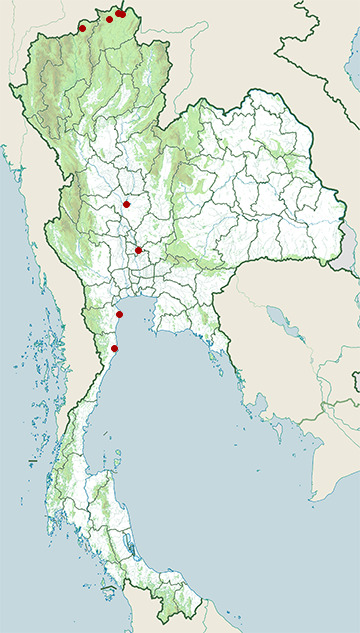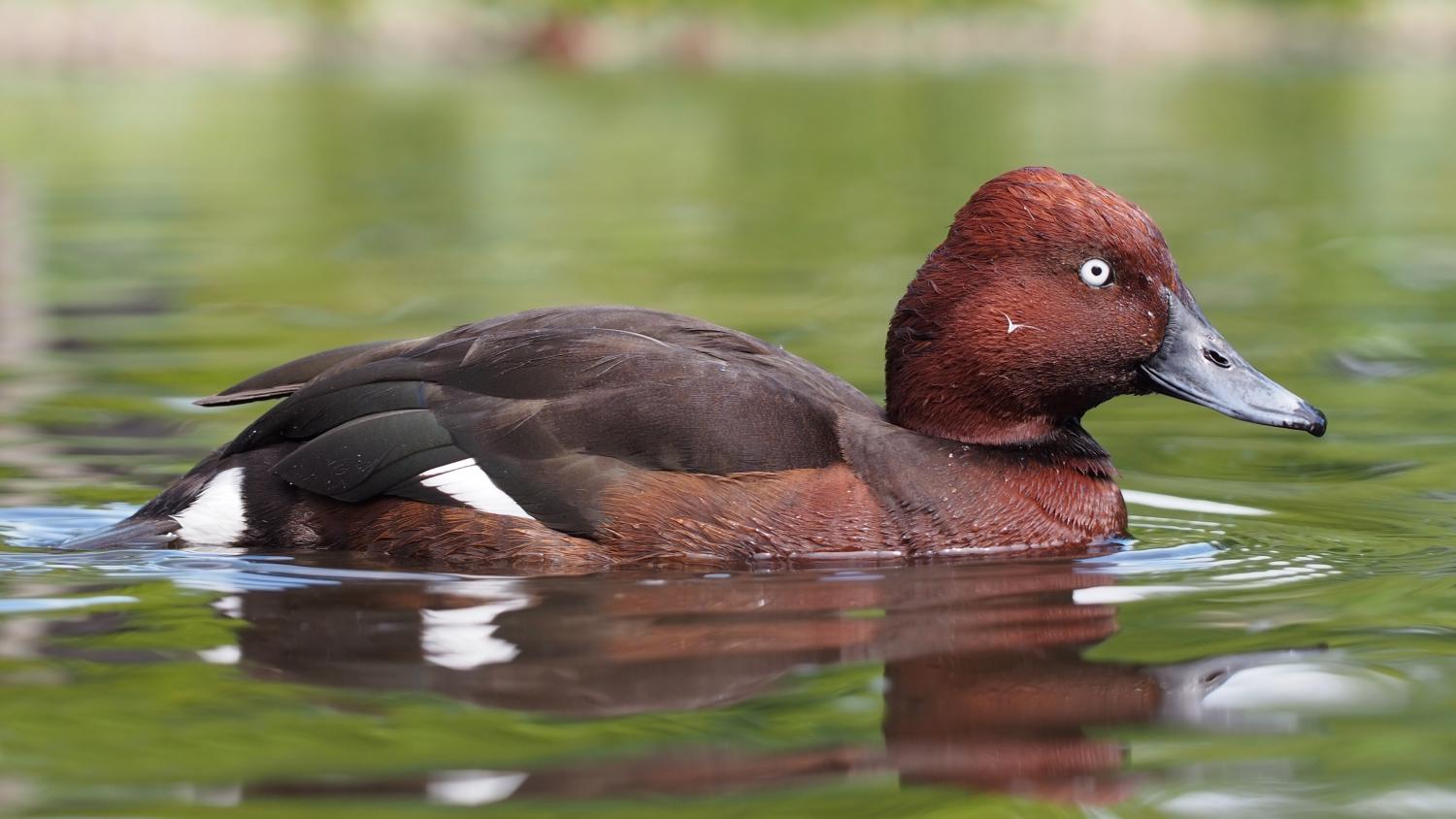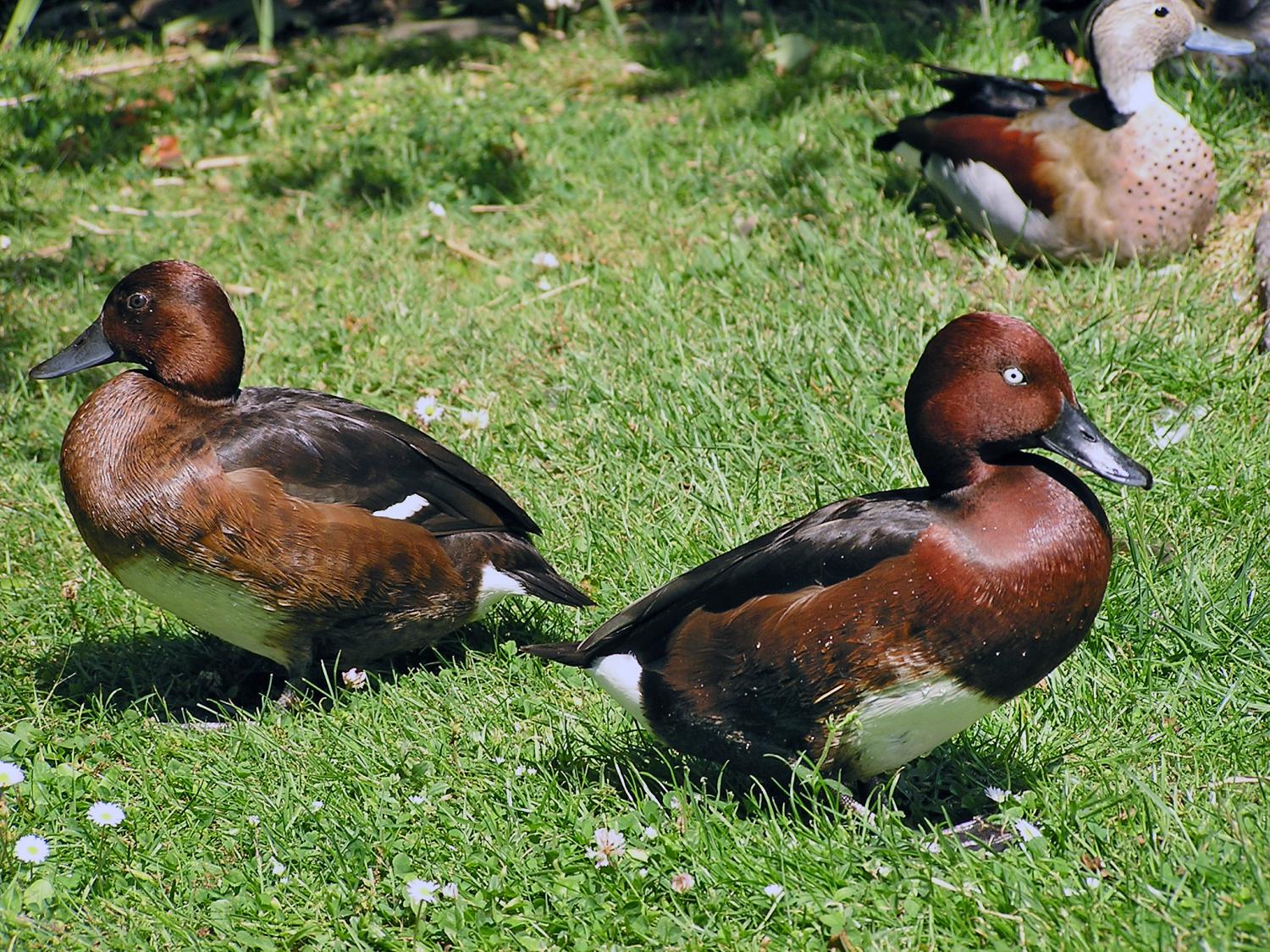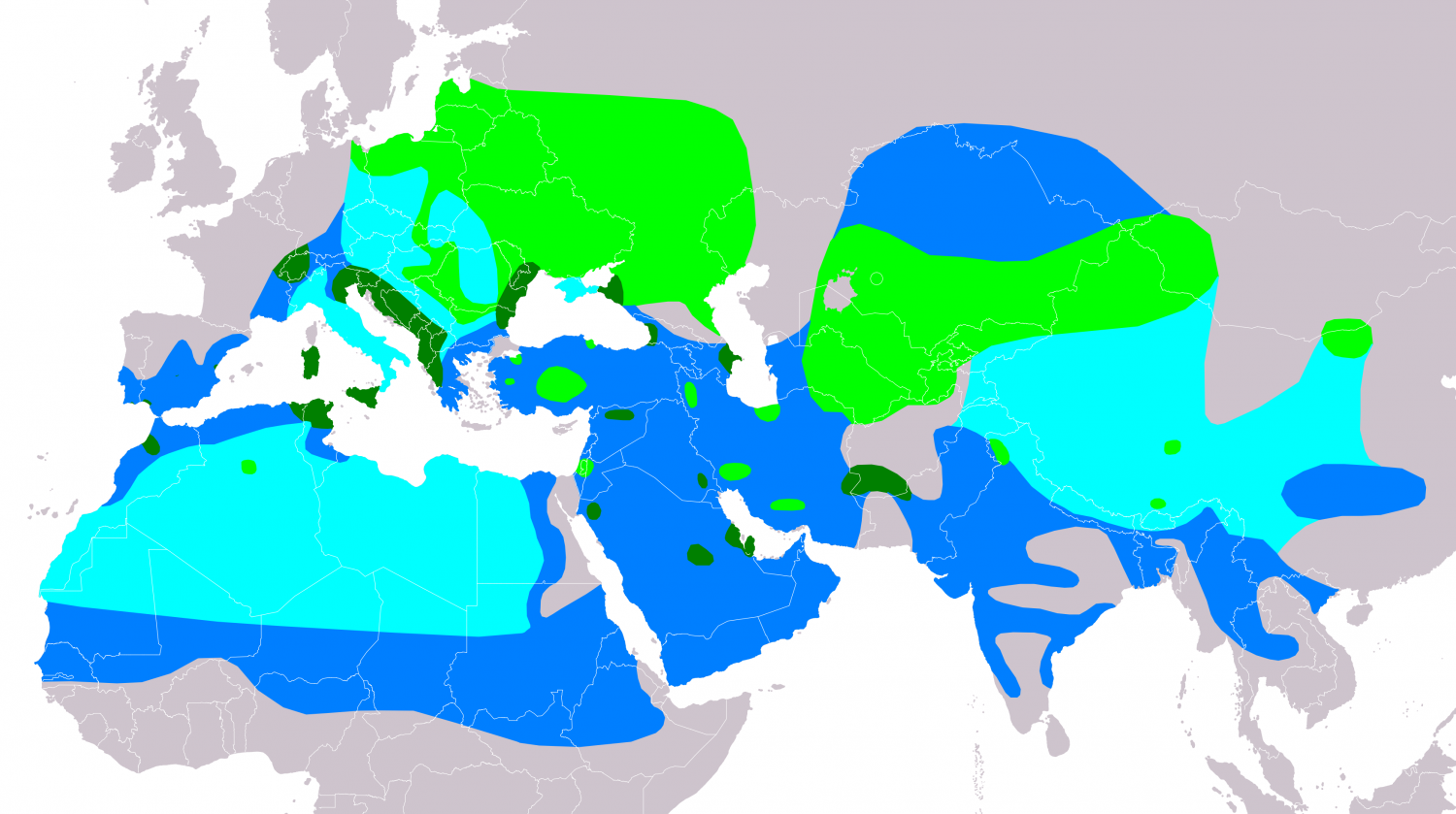Species of Thailand
Ferruginous pochard
Aythya nyroca
Johann Anton Güldenstädt, 1770
In Thai: เป็ดดำหัวสีน้ำตาล
The ferruginous duck, also ferruginous pochard, common white-eye or white-eyed pochard (Aythya nyroca) is a medium-sized diving duck from Eurosiberia. The scientific name is derived from Greek aithuia an unidentified seabird mentioned by authors including Hesychius and Aristotle, and nyrok, the Russian name for a duck.
Description
The breeding male is a rich, dark chestnut on the head, breast and flanks with contrasting pure white undertail coverts. In flight the white belly and underwing patch are visible. The females are duller and browner than the males. The male has a yellow eye and the females have a dark eye.
Habitat
The ferruginous duck prefers quite shallow fresh waterbodies with rich submerged and floating vegetation with dense stands of emergent vegetation on the margins. In some areas it will use saline or brackish pools or wetlands. On passage and wintering will also frequent coastal waters, inland seas and large, open lagoons.
Distribution
The breeding range of the ferruginous duck is from Iberia and the Maghreb east to western Mongolia, south to Arabia, although in the west is now scarce and localised and locally extirpated in some countries. The duck winters throughout the Mediterranean Basin and the Black Sea, smaller number migrate into sub-Saharan Africa via the Nile Valley. Eastern birds winter in south and south-east Asia.
Habits
These are gregarious birds, but less social than other Aythya species but where common it can form large flocks in winter, often mixed with other diving ducks, such as tufted ducks and common pochards. Forms pairs from January onwards and during courtship the male often curls his tail so that it dips into the water forming a triangular white patch of the undertail coverts. In areas where it is common it will form colonies at protected sites such as islands, often in association with gulls. Where scarce it nests singly, in dispersed and concealed sites.
Eggs are laid from the end of April or early May in a nest which is sited on the ground close to water, or sometimes a floating nest is built among emergent vegetation. The eggs are incubated for 25–27 days and the fledging period is 55–60 days.
These birds feed mainly by diving or dabbling. They eat aquatic plants with some molluscs, aquatic insects and small fish. They often feed at night, and will upend (dabble) for food as well as the more characteristic diving.
Conservation
The species is threatened by the degradation and destruction of its favoured habitats by anthropogenic causes which are very wide and varied including impoundment, drainage, pollution and mismanagement. The introduction of non-native species has also caused habitat degradation, e.g. the stocking of lakes with and accidental introduction of grass carp Ctenopharyngodon idella has caused reductions in plant and animal biomass available for the ducks to feed on. In addition, the increased threat of drought due to climate change may pose a threat to the species in the drier parts of its range. Increased disturbance by fishing boats and anglers among marginal vegetation could cause abandonment of the breeding sites or disrupt the timing of breeding particularly in populated areas, e.g. western Europe. Ferruginous ducks are also threatened by hunting and large numbers are shot on passage in the autumn and in the wintering areas. Although protected in most European countries illegal and accidental hunting persists. It is one of the species to which the Agreement on the Conservation of African-Eurasian Migratory Waterbirds (AEWA) applies. Among recent local initiatives it should be mentioned inclusion of the breeding habitats of the species in Armenia into network of Emerald Sites protected by the Bern Convention.
This article uses material from Wikipedia released under the Creative Commons Attribution-Share-Alike Licence 3.0. Eventual photos shown in this page may or may not be from Wikipedia, please see the license details for photos in photo by-lines.
Category / Seasonal Status
Wiki listed status (concerning Thai population): Rare winter visitor
BCST Category: Recorded in an apparently wild state within the last 50 years
BCST Seasonal status: Non-breeding visitor
Scientific classification
- Kingdom
- Animalia
- Phylum
- Chordata
- Class
- Aves
- Order
- Anseriformes
- Family
- Anatidae
- Genus
- Aythya
- Species
- Aythya nyroca
Common names
- Thai: เป็ดดำหัวสีน้ำตาล
Conservation status

Near Threatened (IUCN3.1)

Near Threatened (BirdLife)

Near Threatened (ONEP)

Vulnerable (BCST)
Photos
Please help us review the bird photos if wrong ones are used. We can be reached via our contact us page.
Range Map

- Bueng Boraped Non-Hunting Area
- Chiang Saen District, Chiang Rai
- Fang District, Chiang Mai
- Khao Sam Roi Yot National Park
- Laem Pak Bia
- Mae Chan District, Chiang Rai
- Maha Rat District, Phra Nakhon Si Ayutthaya
- Nong Bong Khai Non-Hunting Area




